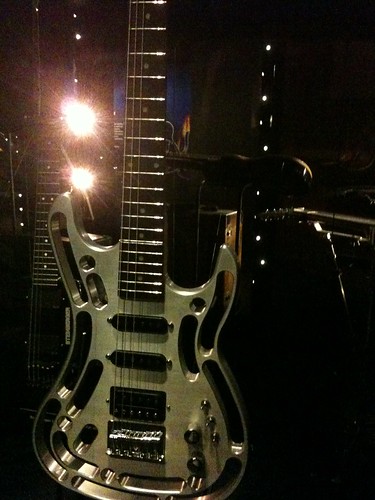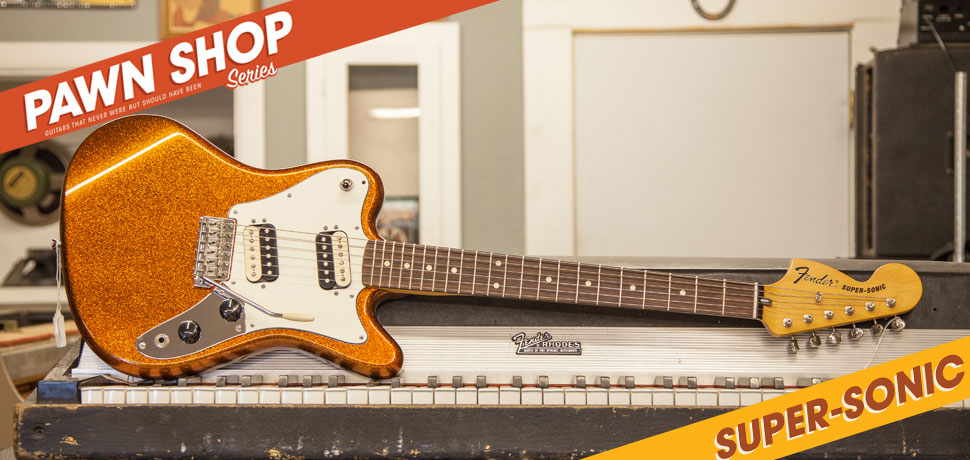In 1985 CBS owned Fender Electric Musical Instrument Company was in negotiations with a group lead by Bill Schultz to purchase Fender. The deal went through and thus the Fender Musical Instrument Company (FMIC) was started. However there would not be a manufacturing facility to later that same year. Fender guitars were all manufactured in Japan during this period, including the Fender Performer.
It is believed this guitar was produced from leftover scap wood from Japanese manufactured Fender Stratocasters. The ever thrifty Leo Fender would have loved this idea.
The Performer was designed by John Page. Page worked for CBS Fender and the privately owned FMIC in their R and D department for many years and is responsible for other Fender guitar and bass designs.
Page was the force behind Fender’s Custom Shop when FMIC took over the company. Page states this guitar was a predecessor to the Fender Elite Jazz Bass.
At the time Fender was competing with Kramer, Jackson and B.C. Rich and Fenders Teles and Strats were considered pretty conservative.
Page came up with this design in 1983 as Fender’s entry into the market. He also states the peghead he designed was more Fender-like, however was changed during the manufacturing process.
The 24 fret micro-tilt neck is maple with a rosewood fretboard. The knob on the pickguard have inset rubber grips for easy grasping. The jack socket is an improvement over that found on most Fender guitars.
The guitar came with a metallic finished paint job. The variety of colours could be burgundy mist, candy green, white or sun-burst (which was non-metallic).
The guitars two humbucking pickups both were set at a reversed angle than what one would find on a Stratocaster or Telecaster. The coils were offset to keep in line with the strings and potted in epoxy, which meant you better like these pickups, because they could not be replaced.
The controls featured a coil-tap switch to provide a sweet humbucking sound or a brighter single coil tone.
The tone knob was unique in that it used a stacked potentiometer with 250k and 1M capacitors with a center detent.
The bass version of the Fender Performer also had a two octave, micro-tilt adjustable neck. Due to this, light gauge strings were suggested. The neck was slim and the action was set low.
The bass guitar came with two volume knobs and a single tone knob.
I believe Fender learned a valuable lesson from making these guitars and several others; stick to making great guitars, such as the Strats, Teles and P and J Basses that we all know and love.
































